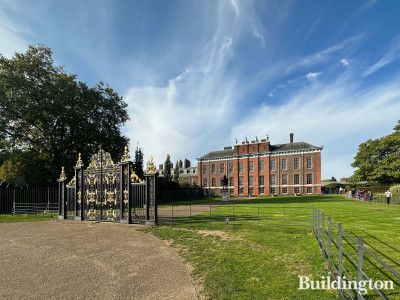Historic Royal Palaces, the independent charity that cares for Kensington Palace, has reconnected Kensington Gardens with Kensington Palace as part of a £12million project to transform the palace and its surroundings. The new gardens make the palace more open, more welcoming and more accessible to visitors and to the local community of Kensington and Chelsea. Working together with English Heritage, Historic Royal Palaces Access Group, and Royal Parks, as well as an expert team of architects and landscape designers the area has been re-established as one great garden, with the palace at its heart.
The landscape at Kensington Gardens as we see it today is, almost in its entirety, the work of Charles Bridgeman, royal gardener from 1728 until 1738, and one of Britain’s greatest and most influential landscape designers. However in the late nineteenth and early twentieth century, and in recent decades, railings and fences were erected, along with evergreen shrubberies and informal groups of trees close to the building interrupting Bridgeman’s original scheme. The removal of these high railings and fences, and of some shrubs and trees, has opened up the palace and its surrounding landscape and made it more welcoming.
A new three acre public garden to the east of the palace has been created and over 250 new trees have been planted in Kensington Gardens in conjunction with the Royal Parks.
The landscape scheme for Kensington Palace used Bridgeman’s work in the garden as a catalyst for the reconnection of the palace and the park.
By creating a new landscape the building’s appearance has become warmer and more attractive – the gardens now reflect the history and importance of the palace and is sympathetic to the surrounding area. The new Wiggly Walk, utilizing a new resin bonded buck coloured pathway to achieve level access, is immersed in the midst of hardy native Hornbeam hedging, with mid-green leaves throughout spring and summer producing green catkins from late spring to autumn, turning to clusters of winged fruit in autumn providing food for local wildlife.
Visitors to the new café can sit outside on the newly created terrace area and enjoy the gentle fragrance of a Magnolia. Further to the south of the gardens a Wild Flower meadow introduces biodiversity and a newly created herbaceous border is in keeping with the original Bridgeman designs.
That the framework of this garden should have survived in the centre of London is nothing short of extraordinary. This is the last surviving example of a complete Bridgeman landscape and is a Grade I Registered Park and Garden. These new interventions are subtle but significant, re-introducing the once historic vistas from the palace to the park. It is the change from a park with a palace at its edge to a garden with a palace at its heart.
Todd Longstaffe-Gowan, Landscape Architect for the project said: “The aims of the new garden are quite simply to create a more coherent and dignified setting for the palace, to recover important historic views to and from the gardens, and to reconnect the palace to the neighbouring park, thus restoring Kensington Palace to its place at heart the of Kensington Gardens. The new ten-acre royal garden builds upon and complements the bold ‘unaffected Englishness’ of Charles Bridgeman’s early eighteenth-century landscape, but is a new layer in this most layered of gardens, and a contemporary response to the palace, the park and the needs of a modern audience.”
Graham Dillamore, Gardens and Estate Manager for Historic Royal Palaces said: “Like at Hampton Court Palace the 10 acre garden around Kensington Palace has traditionally provided the setting and backdrop for the Royal apartments. The exciting new gardens to the east and south not only reunite us with the Park but will provide a grand and easier approach for visitors, transferring them from Royal Park to Royal Palace in a few simple steps. Our new garden observes the need for biodiversity in London, respects the historic landscape and engages fully with the visitors to Kensington Gardens. This mixture of old and new is a harmonious one and we all look forward to watching it grow and meeting lots of new visitors who for many years thought we were closed."
